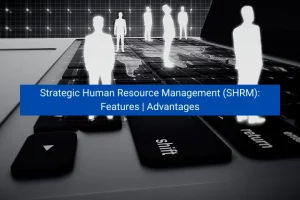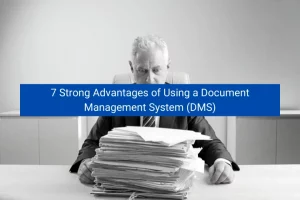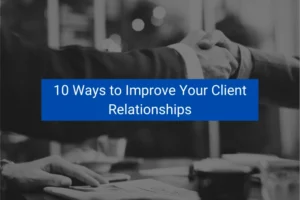When you simply have a few open positions and a few contenders for each one, candidate engagement is a breeze. However, the more candidates you have, the more difficult it becomes, especially in high-volume hiring situations when you may have hundreds of applicants for one or more positions.

Yes, you will reject the great majority of individuals, but you still want to make your recruitment process as interesting and enjoyable as possible for the candidates, because, nearly 60% of job seekers have been handled improperly during a recruitment process.
What is Candidate Engagement?
Candidate engagement is the process and estimation of communicating with your candidate pool on a regular basis, whether through email, text, or in person. A job application, email opens, or SMS reply could be the goal of engagement for staffing.
The most important goal of the Inbound Recruiting process is to increase candidate engagement. Candidate Engagement is aided by this process, which provides candidates with extraordinary and valuable content.
Related: Advantages and Disadvantages of Rehiring Ex-Employees
It's not only about getting qualified candidates through the door; it's also about keeping them interested throughout the application process and supporting them in finding a job they'll enjoy. Making a connection with job seekers is the goal of candidate engagement.
The more notifications they receive from you, the more resources they devote to the work. For employers, candidate involvement is critical.
10 Ways to Improve the Candidate Engagement
The ability to engage viable candidates is a critical component of assembling the right team. You don't have to wait for an applicant to sign before beginning the engagement approach, and you should communicate with them as soon as they apply for the job. In today's competitive talent acquisition market, firms must focus on candidate engagement in order to hire the best and most qualified candidates.
Candidates may lose interest in joining your firm if your company does not maintain constant contact with them throughout the recruiting process. They may then look for work elsewhere.
1. Quickly assess candidates
Many companies set up specified days to assess each new job applicant. Candidates who are reviewed and followed up on quickly, on the other hand, are more likely to be hired. Responding to prospects as soon as possible will assist ensure that good candidates remain engaged and excited about the prospect of working for your organization.
Related: Difference Between Talent Acquisition and Talent Management
If you keep them waiting for a response, you risk losing them to alternative career opportunities.
2. Maintain contact with candidates.
After you've assessed candidates, your hiring team should endeavor to maintain contact with them throughout the entire hiring process. If you have any interviews with them, instead of keeping them waiting, you can speak with them to find out the specific day of the interview.
Not only should you communicate with them regarding the employment process, but you should also offer information about your firm and invite them to other events. Make contact with them on a regular basis. The key to a successful engagement is communication.
3. Establish a hiring timeline and stick to it
You will receive all of your possible prospects after receiving the results of the pre-employment assessment test. Engage them in conversation to inform them that their profile has been advanced to the next level.
Related: Candidate Relationship Management – An Expense or Investment?
Furthermore, provide them with specific details regarding the hiring process, as not every organization follows the same procedure. Also, the duration of the entire procedure. And after you've set the time limit, stick to it.
4. Use text messaging to increase candidate involvement
Texting candidates throughout the hiring process can improve candidate engagement. Candidates will receive the interview reminders, itinerary modifications, and other important information immediately after receiving text messages on their phones.
Text messaging is an efficient way for job seekers and employers to communicate, and it may help you expedite your applicant and new contract communication.
5. Send email confirmations
To increase candidate involvement, this should be a no-brainer. 96% of job seekers want assurance that their application was received. Only 8% of people report they always get this. So, through your applicant tracking system (ATS) or candidate assessment platform, make use of the latest technologies and automate your engagement with candidates.
Related: How does an Applicant Tracking System (ATS) work?
Keeping in touch at the start of the process isn't difficult; in fact, it's one of the most straightforward victories you can achieve. Simply set up an automatic email response for each new application.
Include a thank you for taking the time to fill out the application in your response, and let prospects know what the application deadline is, as well as how long they may expect to wait after that date to hear whether they have been successful in progressing to the next stage or not.
The word 'or not' is crucial here. During the first round of filtering, you are not required to provide feedback to unsuccessful candidates; just let them know they have not gone further, and thank you again for taking the time to apply. This response can also be automated.
6. Establish and stick to a hiring timeline
When you have a large number of applications to review, use an applicant tracking system (ATS) to help you narrow them down fast. Maintain candidate involvement by informing successful applicants that they have advanced to the next level of the process.
Because not many firms recruit in the same way, always let prospects know what steps your recruitment process entails. You don't want to catch candidates off guard and turn them off from working with you.
Related: 10 Most Popular Applicant Tracking System (ATS) in 2022
Because you're delivering identical information to each candidate, this may also be automated. Tell them what to expect at each following level — assessments, interview stages, and hiring decisions – and, most importantly, when to expect them.
You don't have to provide exact dates at this point; instead, provide a range, a time period, such as a week, two weeks, or longer. Also, keep candidates informed if there are any unforeseen delays; if they are left in the dark for an extended period of time, they may become concerned that they have been rejected, and you risk losing their interest in your organization.
7. Develop a fun pre-selection procedure.
It's extremely hard to manually screen all of the prospects in a high-volume hiring situation, and if you do, you risk missing out on qualified candidates.
You'll need to figure up a means to choose candidates for the following round fast and without requiring much of your time. You should, however, make the process interesting.
What is the best way to achieve this?
You can develop a custom online assessment experience for your firm that will assist candidates to learn more about your company while also providing you with useful information about the candidates.
Related: Employee Engagement | Top 7 Activities of Employee Engagement
Incorporate a variety of variables into your assessment process. These could include, for example:
- Personality Assessments
- Gamified Evaluations
- Business Videos
- Tests of Situational Judgment
- Open-Ended Inquiries
Combining exams with videos in an interesting way will improve the candidate experience, and you'll be able to filter down your applicant list swiftly and fairly based on the results of the assessments.
8. Offer feedback
It may be difficult to provide tailored feedback to everyone if you have a huge number of prospects due to the high volume of hiring. Some recruitment technology solutions will allow you to screen, grade, and rank prospects for you, as well as give you details on how the rating was determined.
Related: What are the Most Recent Trends in Recruitment?
Some assessment suppliers, on the other hand, go a step further and let you select whether or not to share assessment results with your candidates after they've completed the application. By giving unsuccessful candidates comments, they can understand where their strengths and shortcomings are, which will benefit them in their future professions.
If possible, send feedback to candidates who have progressed further in the process on the same day they are interviewed.
Candidates who receive a response on the same day interviewed are 52 % more likely to make an extra effort to ensure they have a relationship with the company - transfer friends, re-apply for other positions, buy from the company, etc.
When compared to the number of candidates who said they would stay in touch with the organization if they were just given recruitment process-based feedback, such as future steps, only 41% said they would.
Making the effort to provide timely feedback will definitely benefit you. But keep in mind that if you choose this road, you'll need to use technology to make sure you achieve your objectives.
9. Make interview scheduling more automated.
Interview scheduling takes time, especially when there are several stakeholders (hiring managers, recruiters, and peers) involved. Fortunately, there are programs that allow you to schedule interviews depending on availability.
Our software automates the majority of the processes in the volume hiring process, allowing hiring managers and recruiters to concentrate on the most crucial ones: the face-to-face interview and the hiring decision.
10. Seek feedback.
Even with high-volume hiring, show that you value your candidates' opinions during the recruitment process.
Don't only give them feedback later; ask them to give you feedback as well. Allow them to contribute to the development of your future recruitment strategy, as many of them represent the next generation of job seekers, and what they're seeking may differ from what you're now delivering.
Related: E-Recruitment | Is E-Recruitment or Online Recruitment Beneficial?
Make a quick survey and ask for their feedback. You'll not only engage them, but you'll also collect useful information about your recruitment process, which you can use to improve it.
If you want to ask candidates something different, the questions can be adjusted.
Conclusion
It's difficult to improve candidate engagement during periods of high-volume hiring. Many chores, however, may be automated while still keeping candidates interested.
Don't treat candidates like numbers; instead, use automated communication, videos, and feedback to give them a nice experience. This ensures that they remain interested in your organization and may apply again in the future if they are unsuccessful this time.
For Human Resource, Payroll and many more HR Services, visit our website https://lingueeglobal.com/



